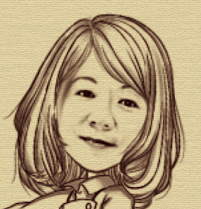Watch the video clips below about how is milk being processed...watch how smart the cows are ! Click to the highlighted link below
How milk is made
How it's made milk...Food processing in Year 6 Science
Solar eclipse...in Year 6 Science
A total solar eclipse
As seen from the Earth, a solar eclipse occurs when the Moon passes between the Sun and Earth, and the Moon fully or partially blocks the Sun. This can happen only at a new moon, when the Sun and the Moon are in conjunction as seen from Earth in an alignment. In total eclipse, the disk of the Sun is fully obscured by the Moon. In partial eclipse only part of the Sun is obscured.
An eclipse is a natural phenomenon. Nevertheless, in some ancient and modern cultures, solar eclipses have been attributed to supernatural causes or regarded as bad omens. A total solar eclipse can be frightening to people who are unaware of its astronomical explaination, as the Sun seems to disappear during the day and the sky darkens in a matter of minutes.
Because it is dangerous to look directly at the Sun, observers should use special eye protection or indirect viewing techniques when viewing a partial eclipse, or the partial phases of a total eclipse.
( Adapted from http://en.wikipedia.org/wiki/Solar_eclipse )
Watch the solar eclipse...click to the highlighted link below
solar eclipse in Varanasi
Lunar eclipse...in Year 6 Science
A lunar eclipse occurs when the Moon passes directly behind the Earth into its umbra ( shadow ). This can occur only when the Sun, Earth, and the Moon are aligned exactly, or very closely so, with the Earth in the middle. Hence, a lunar eclipse can only occur in the night of a full moon. The type and length of an eclipse depend upon the Moon's location relative to its orbital nodes. Unlike a solar eclipse, which can only be viewed from a certain relatively small area of the world, the lunar eclipse may be viewed from anywhere on the night side of the Earth. A lunar eclipse lasts for a few hours, whereas a total solar eclipse lasts for only a few minutes at any given place, due to the smaller size of the moon's shadow. Also unlike solar eclipses, lunar eclipses are safe to view without any eye protection or special precautions, as they are no brighter than the full moon itself.
The shadow of the Earth can be divided into two distinctive parts : the umbra and penumbra. A partial lunar eclipse occurs when only a portion of the Moon enters the umbra. When the Moon travels completely into the Earth's umbra, one observes a total lunar eclipse. The Moon's speed through the shadow is about one kilometer per second. The toatal time between the Moon's first and last contact with the shadow is much longer, and could last up to 4 hours.
( Adapted from http://en.wikipedia.org/wiki/Lunar_eclipse )
Watch the video clip of lunar eclipse...







